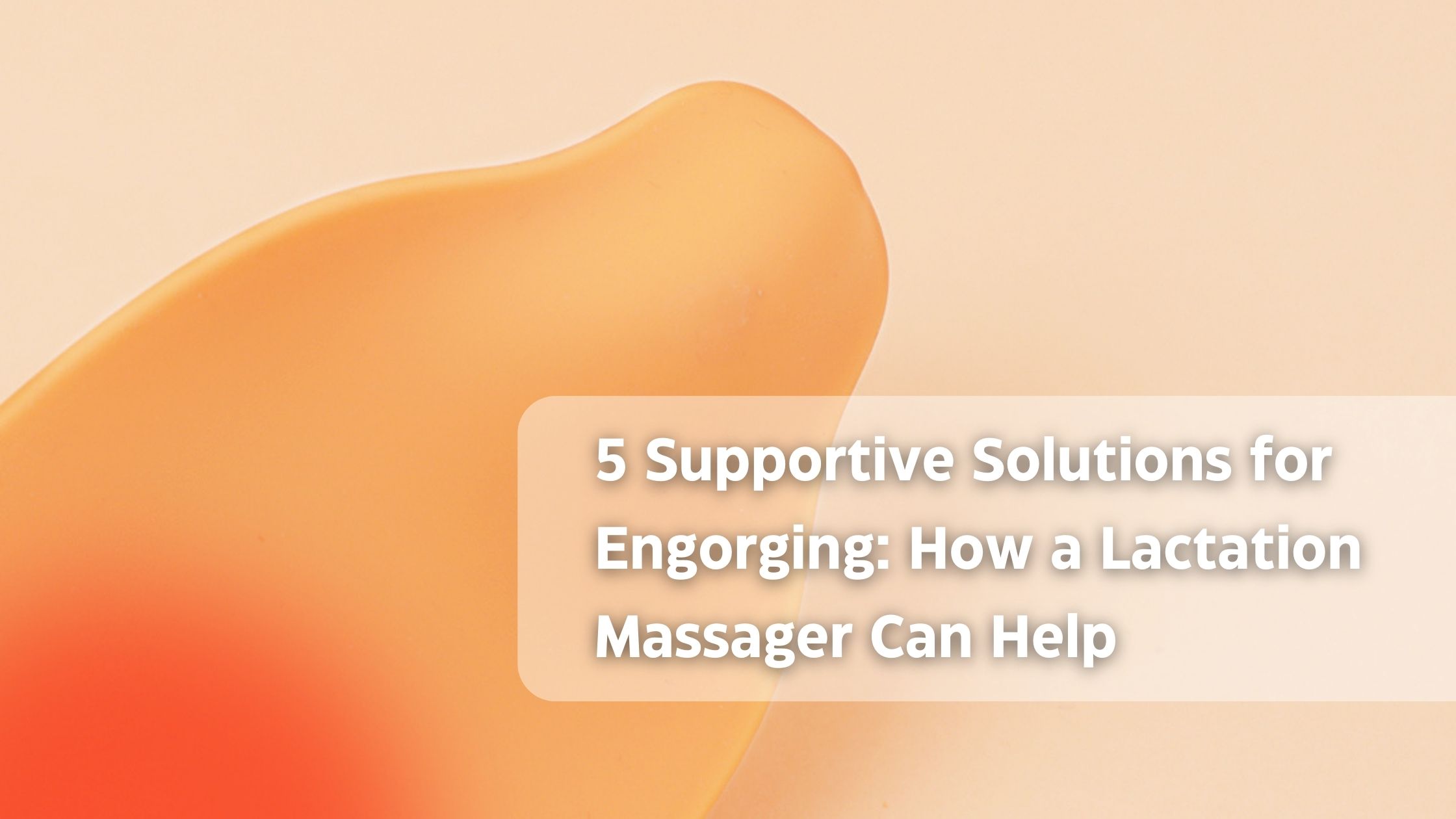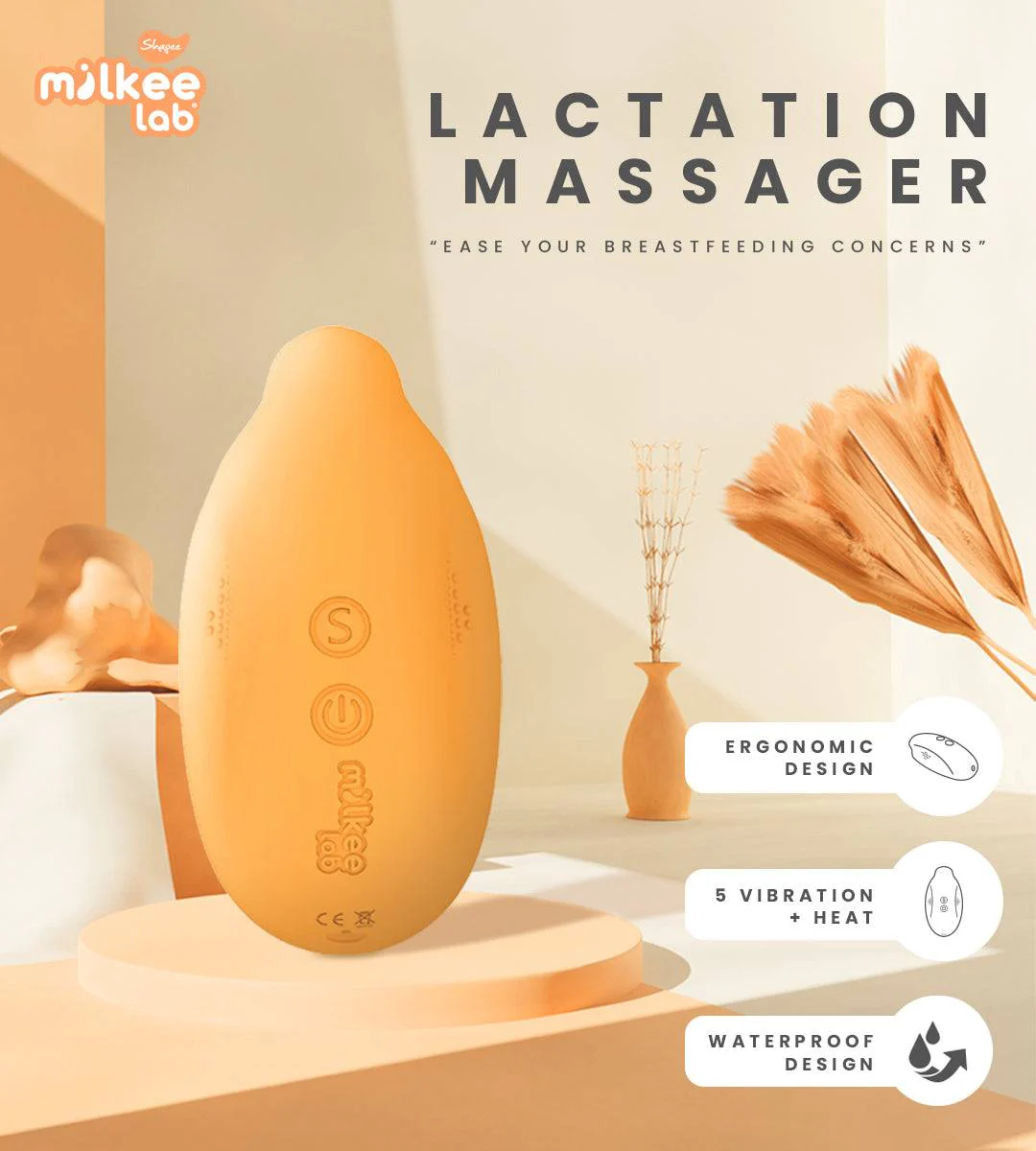5 Supportive Solutions for Engorging: How a Lactation Massager Can Help
Understanding Engorging: Signs and Symptoms

Identifying the Signs of Engorgement
Engorgement is a common challenge for new mothers, occurring when breasts become overly full of milk. This condition manifests as swollen, hard breasts that feel warm to the touch, often accompanied by flat or stretched nipples that make it difficult for babies to latch. Pain and discomfort can add to the struggle, and some women may even experience fever or flu-like symptoms. Visibly, the skin on the breasts may appear shiny or feel tight, and the milk flow can slow down or stop completely. If you notice these signs, addressing them promptly is essential for both comfort and breastfeeding success.
Common Causes of Engorgement
Breast engorgement happens when the breasts become overly full and swollen, causing discomfort. This can happen for several reasons. Skipping feedings, not fully emptying the breasts, or waiting too long between feeds can lead to a build-up of milk. In the early weeks, some moms produce more milk than the baby needs, which can also cause engorgement. Sudden changes like missed feedings or stopping breastfeeding abruptly can result in milk accumulating in the breasts. Even tight bras or clothing that restrict milk flow can contribute to this. By understanding these causes, moms can take simple steps to prevent and manage engorgement, making breastfeeding more comfortable and enjoyable.
1. Stimulates Milk Flow
A lactation massager is designed to gently stimulate the breast tissue, promoting milk flow and helping to relieve the pressure of engorgement. By applying gentle pressure and using rhythmic motions, the massager can encourage the milk to flow more freely, making it easier for moms to express milk or for babies to latch successfully. This stimulation not only helps relieve discomfort but can also support an effective breastfeeding session.
2. Reduces Swelling and Discomfort
Engorged breasts can feel heavy and painful, leading to swelling that may complicate breastfeeding. A lactation massager can help alleviate this discomfort by gently kneading the breast tissue. The massager helps to break up any blockages in the milk ducts, reducing swelling and promoting a more comfortable feeding experience. Many moms find that using a lactation massager before breastfeeding can ease discomfort and make the process much more pleasant.
3. Promotes Relaxation
Engorgement can lead to stress and anxiety for new moms, especially when it interferes with breastfeeding. The soothing motions of a lactation massager can promote relaxation, helping moms to feel more at ease during feeding sessions. This calming effect can create a positive atmosphere for both mom and baby, fostering better bonding during feeding times. Reducing stress not only benefits the mother but can also help the baby latch more effectively, as both parties are in a more relaxed state.
4. Enhances Breastfeeding Techniques
Using a lactation massager can also help moms refine their breastfeeding techniques. By practicing with the massager, mothers can learn how to effectively use hand expression or optimize positioning for feeding. The massager can serve as a helpful tool in understanding how to manage milk supply and improve latch techniques. As a result, moms can feel more confident in their breastfeeding journey, leading to a more successful experience.
5. Versatile and Convenient
Lactation massagers are designed to be portable and easy to use, making them a convenient solution for moms on the go. Whether at home or out and about, a lactation massager can provide relief from engorgement anytime. Many models are compact and can easily fit into a diaper bag, ensuring that moms always have a supportive solution on hand. This versatility makes it easier for moms to manage engorgement and continue their breastfeeding journey with confidence

The Role of a Lactation Massager in Managing Engorgement
How a Lactation Massager Can Alleviate Symptoms
A lactation massager is a helpful tool for managing engorgement. Imagine a soothing experience that transforms your breastfeeding journey! This innovative massager gently vibrates and massages the breast tissue, providing the perfect relief for engorgement. With its gentle stimulation, it helps break up milk clots and encourages a smooth milk flow, making feeding time easier and more enjoyable for both you and your baby. Not only does it reduce swelling and discomfort, but it also softens the breast, making it simpler for your little one to latch on. By using this massager regularly, you can prevent pesky clogged ducts and mastitis, ensuring a more comfortable breastfeeding experience. Whether used before, during, or after feeding, it offers a non-invasive, drug-free solution that puts you back in control of your comfort. Say goodbye to engorgement woes and hello to a more pleasant breastfeeding journey!

Expert Tips on Using a Lactation Massager for Engorgement Relief
To use a lactation massager, start by washing your hands and ensuring the device is clean. Gently move the massager in circular motions around the breast, focusing on any hard or lumpy areas. Start with light pressure, gradually increasing it as it feels comfortable and use the massager on each breast for about 5-10 minutes. For better results, try applying a warm compress before massaging, and follow up with breastfeeding or pumping to fully empty the breast. For best relief, use the massager 2-3 times daily. If pain continues, consult a lactation specialist and always follow the instructions that come with your specific massager.
Chill Out with Cold Compresses for Engorgement Relief! Cold compresses are your secret weapon against swelling and discomfort between feedings! Simply place a cool compress or chilled cabbage leaves on your breasts for about 10 minutes, and feel the soothing relief wash over you. This simple technique not only helps reduce inflammation but also provides that much-needed comfort. For even better results, try alternating warm compresses before feedings with these refreshing cold packs afterward. You’ll be amazed at how this delightful combo can help you conquer engorgement and keep you feeling fabulous on your breastfeeding journey!
The Importance of Hydration and Nutrition
Staying hydrated and eating well are key to managing breast engorgement! Drink lots of water to support steady milk flow, and focus on balanced meals with proteins, fruits, and veggies. Add omega-3-rich foods for breast health, and try lactation-boosting options like oats and fenugreek. Limit caffeine and alcohol, as they can reduce milk supply, and avoid crash diets for examle breastfeeding moms need those extra calories! For a diet tailored to your needs, a quick chat with a nutritionist can make all the difference. Taking care of yourself helps you care for your little one, too!

Other Strategies to Manage Engorgement Effectively
Several other strategies can help manage engorgement effectively such as frequent breastfeeding or pumping is key to preventing milk buildup. Apply cold compresses between feedings to reduce swelling. Try reverse pressure softening to help the baby latch easier and use cabbage leaves on breasts for natural relief. Practice gentle breast massage in the shower and make sure avoid tight bras or clothing that can restrict milk flow. Consider using a breast pump to remove excess milk. Try different breastfeeding positions to ensure complete breast emptying and get a rest as much as possible to support your body's healing. If symptoms persist, don't hesitate to seek medical advice.
Conclusion
Managing breast engorgement is essential for a comfortable breastfeeding experience. By recognizing the signs and causes of engorgement, mothers can take proactive steps to alleviate discomfort. Using tools like a lactation massager, staying hydrated, and maintaining a nutritious diet are effective strategies. Additionally, regular breastfeeding or pumping, applying cold compresses, and practicing gentle breast massage can help prevent and relieve engorgement. Remember, if discomfort continues or you have concerns, consulting a lactation specialist or healthcare provider is always a good idea. Taking care of yourself ultimately supports your ability to care for your little one.

